Paul Melloy
2024-11-18
I am a Agroecologist at CSIRO. I
specialise in modelling pest and diseases in agriculture and
horticulture for using in decision support tools.
Read about my recent research below, and if you are interested in
collaborating on a research topic, visit my CSIRO profile
page.
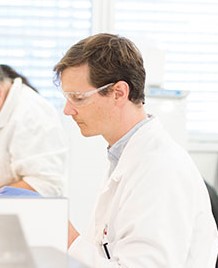
Recent work
UQ Agronomy student workshop on decision support tools
10 October 2024
A workshop to introduce the benefits of consulting decision support
tools (DSTs) in Agriculture.
Class
resources
GRDC Soil-borne disease workshop
August 2024
Early this month I visited Sydney to talk at the GRDC soil-borne
diseases workshop. There were some interesting discussions about the
complexity to manage soil and stubble borne diseases in grain crops. A
primary concern was, despite heroic efforts by our Aussie plant
pathologists, that past research was not easily able to translate to
measurable impact.
Additionally growers are not aware of the increasing chronic disease
impact as a result of increased stubble retention and zero till farming
in Australia.
Overwhelmingly there seems to be strong support for digital tools to help translate research to impact and simplify disease management options with decision support tools. However, will the rest of the GRDC research managers and regional panels agree???
Thank you to Colare group for the invitation to talk.
Starting a new job at CSIRO!!!
July 2024
I am super excited to start a new role back with CSIRO as a Senior Research Scientist. I will be working in a wider capacity on insect pests and diseases, engaging with the horticultural industry and agri-tech platforms to integrate spatial models as decision support tools.
I am working in the agroecology team with the Pest READI and the canola allies project.
Update: A short blog post on myself and Jessa Thurnman, starting with the agroecology team at CSIRO.
Australian Spors Turf Managers Association conference
June 2024
What a treat giving a presentation on ERI diseases to a packed room at the ASTMA Conference in Brisbane.
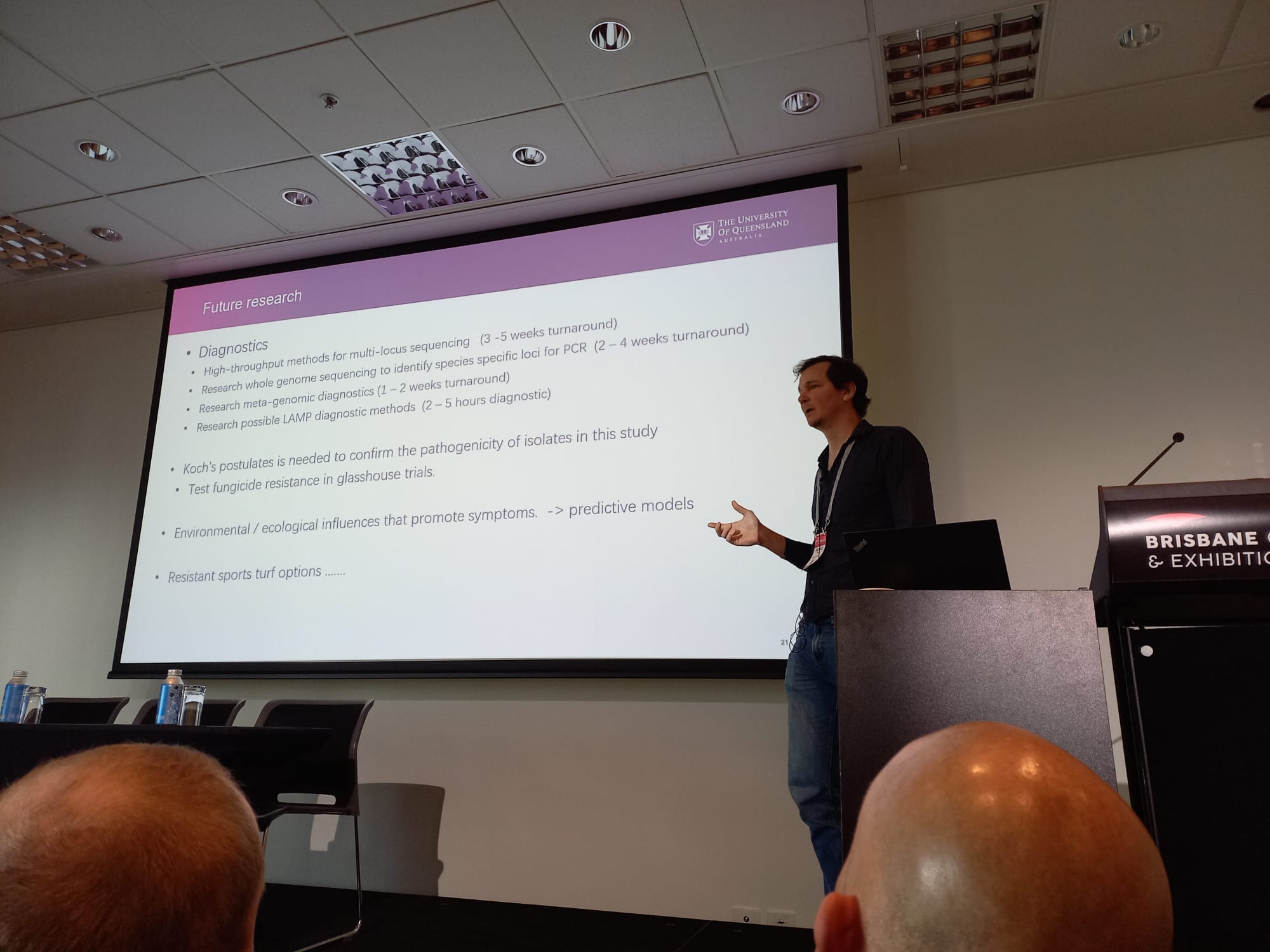
weatherOz: API client for weather and climate data in R
June 2024
Congratulations to Dr Rodrigo Pires
and Prof. Adam
Sparks with this latest publication of which I am a co-author.
weatherOz:
An API Client for Australian Weather and Climate Data Resources in R.
(2024) Journal of Open Source Software, 9(98), 6717,
https://doi.org/10.21105/joss.06717
13th International Epidemiology Workshop
April 2024
What a fantastic workshop hosted by the Socidedade Brasileira de
Gitopatologia (Brazilian Phytopathological Society). The workshop
took place in Iguasu and was a great opportunity to meet plant
epidemiologists from around the world.
I was able to speak on the first day of the workshop introducing the
idea that farmers might not be interested in JAFAs (Just another F___
?fone? App) and that using APIs to serve decision support tools
to farm management software could reach more stake-holders.
I will look forward to the next workshop and seeing many of the same
good folk and new friends.
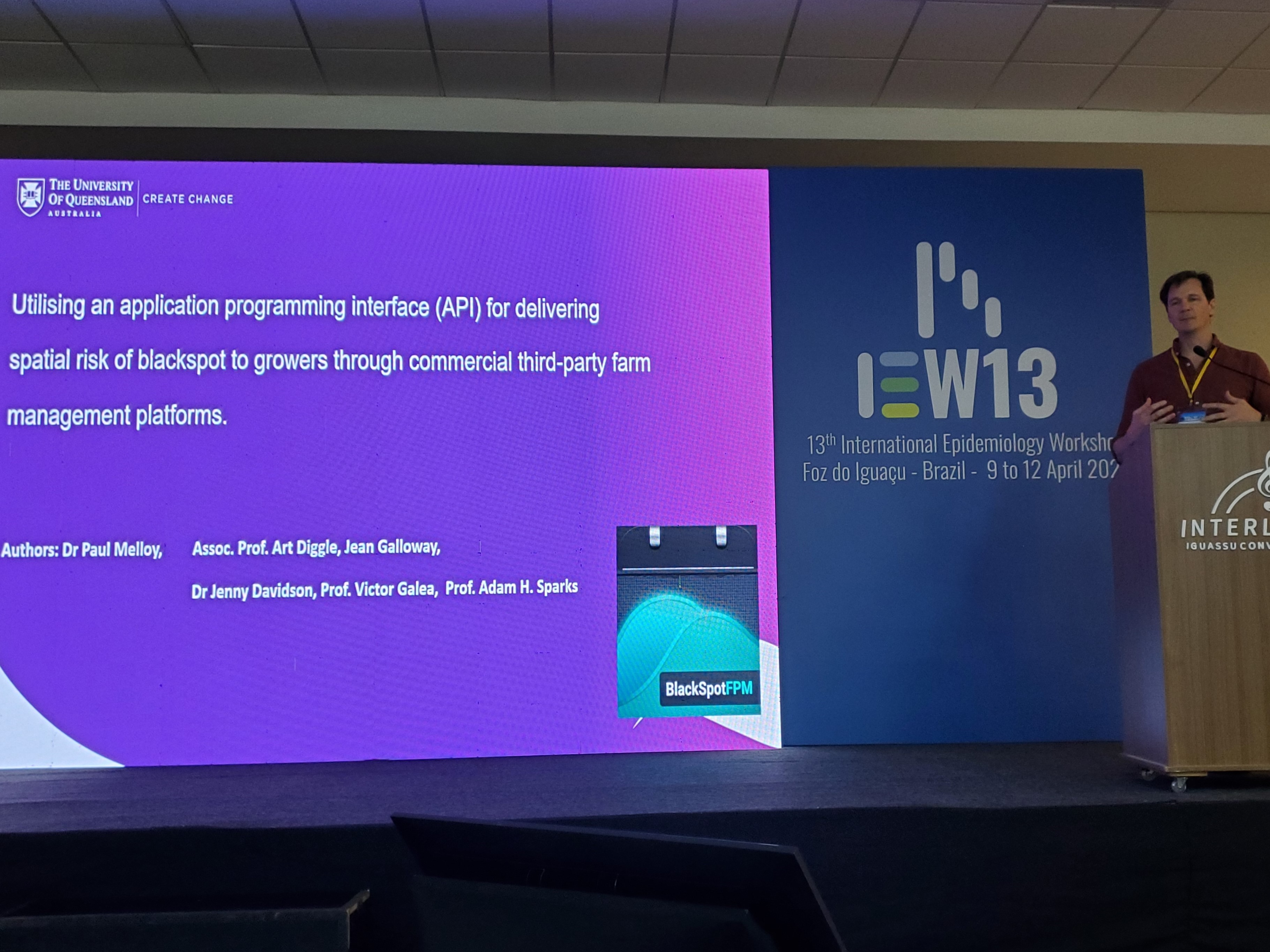
GRDC updates - Goondiwindi and Dubbo
February/March 2024
I presented a talk at “Efficiently limiting yield loss from net-blotch in barley – a meta-analysis” at the GRDC updates in Goondiwindi and Dubbo. This described the results of a meta-analysis of fungicide trials across Australia to determine the best fungicide timing to maximise yield protection.
Read about the results in the GRDC GroundCover article.

Extract from nested lists in R
November 2023
Extracting from lists and nested lists using the “[[”
function is always a bit of syntax I forget and can never seem to google
the answer to easily. So I post it here for myself to easily reference
in the future. Edit - more information can be obtained from
?Extract.
Wearing my programming and data-science hats, lists can be a extremely useful way to store and organise data. This is especially true for epidemiological model outputs. Yet newcomers will find lists can be difficult to understand and find it even more difficult to easily retrieve data from especially for nested lists. This is a short-hand way to easily retrieve the same element within a nested list.
First lets create a nested list.
# set random seed for reproducibility
set.seed(28)
nested_list <- lapply(1:3, function(x) {
return(list(
capitals = sample(LETTERS),
smallcaps = sample(letters),
numbers = sample(1:50)
))
})
#head(nested_list)Here we have created a list with a length of 3 with three lists nested inside each list with names “capitals”, “smallcaps” and “numbers”.
Frequently we only want to pull all of one nested list. To do this we
use two opening square brackets "[[" as the function,
followed by the name of the list.
lapply(nested_list,"[[", "capitals")## [[1]]
## [1] "Q" "Z" "I" "Y" "B" "N" "K" "A" "H" "C" "S" "W" "L" "X" "O" "G" "M" "T" "J"
## [20] "F"
## [ reached getOption("max.print") -- omitted 6 entries ]
##
## [[2]]
## [1] "E" "H" "Z" "B" "F" "J" "N" "V" "W" "C" "O" "P" "U" "Y" "I" "Q" "K" "G" "D"
## [20] "T"
## [ reached getOption("max.print") -- omitted 6 entries ]
##
## [[3]]
## [1] "M" "T" "C" "K" "S" "B" "Y" "W" "Z" "R" "I" "H" "G" "A" "V" "P" "X" "U" "O"
## [20] "J"
## [ reached getOption("max.print") -- omitted 6 entries ]This also works by indicating the integer of the nested list i.e
lapply(list1,"[[", 2).
OnPrime
November 2023
Through October and November I had the opportunity to develop my industry engagement skills. The OnPrime program run by CSIRO provides researchers with coaching on how to improve their engagement with industry and ensure improved outcomes for researchers and industry investors. This program taught me how to develop a research project that is tailored to the needs of industry to ensure research gains are focused on what is novel and needed.
Our team researched the opportunity for developing a turf breeding program to support the turf industry.
I was surprised on the importance of turf in our culture, society and
economy. We learned it can cost approximately $700k to import new
varieties to Australia from the US. These varieties may not even be
suitable for Australia’s varied and harsh climate.
Sporting turf surfaces are at capacity, and with the rise in women’s
sport, demand is still growing placing a lot of pressure on sporting
surfaces. We could save sporting clubs money by developing a wear
tolerant grass which reduces the chance of cancelled games. In addition
a more tolerant turf for stadiums might increase the opportunity for
more frequent games, concerts and events. Boosting revenue for the
stadiums, local businesses and tourism.
Contact our team for more infomation about this project
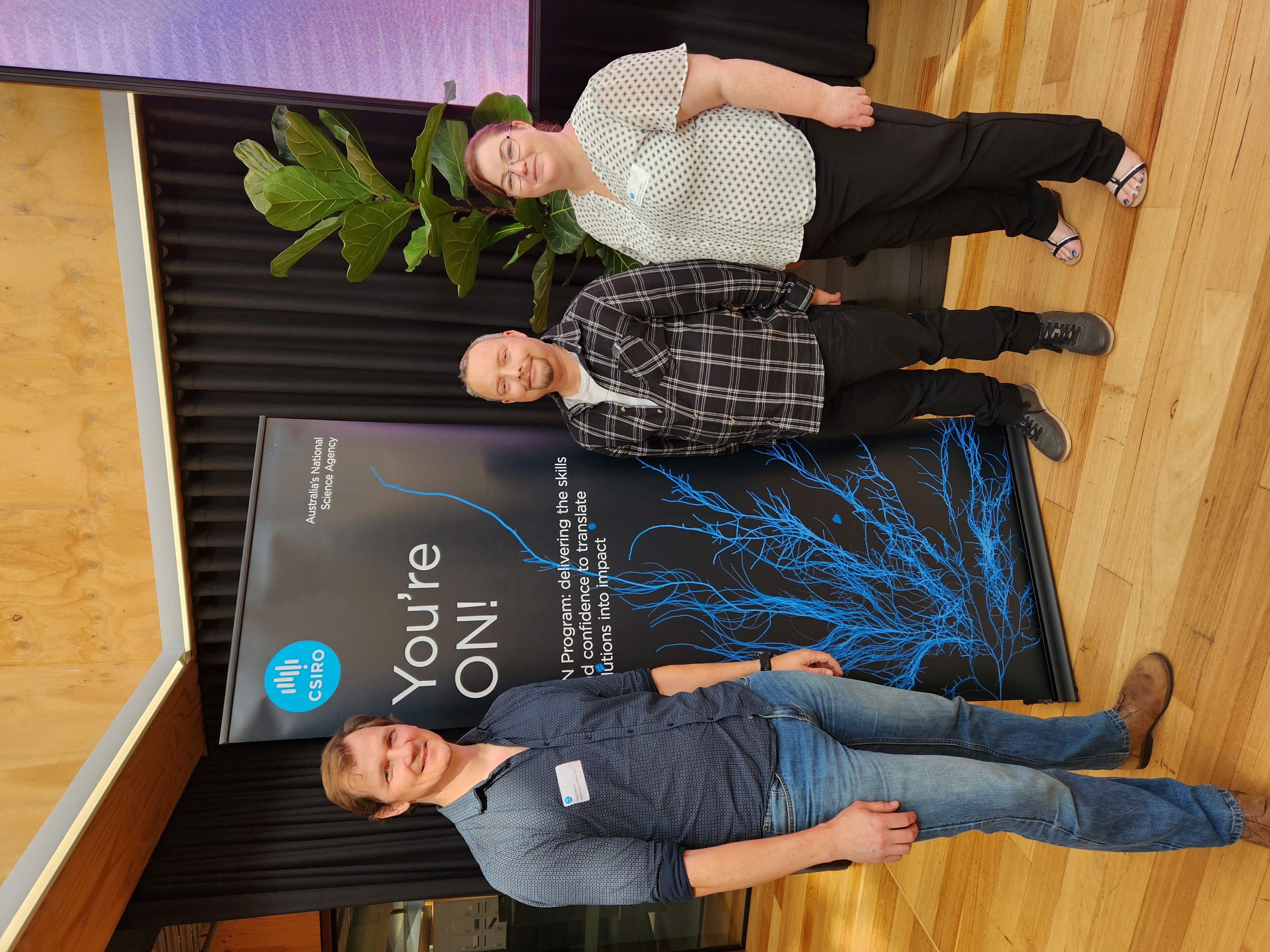
International Conference of Plant Pathology (ICPP)
August 2023
It was a long time coming but this was my first International conference overseas. The ICPP was held in Lyon and it was a scorcher! The city was experiencing a heat wave which placed a topical spin on the conference and how to manage plant diseases in a future experiencing the effects of climate change.
The highlight for me was the episense satellite meeting held on the preceding weekend. The air-conditioning could barely cope with the temperatures outside and despite the amazing talks, my attention could not help to wander to the Rhone river visable through the window behind the speakers.
The attendees of the Episense satellite meeting were genuinely good
company and not only provided stimulating phytopathological discussions,
but also extended a collaborative effort into robust research of the
Lyonnaise cultural pursuits.


The conference was well attended by Aussies with the close of the
meeting providing an opportunity to reflect on the conference insights
and how they could be applied in Australia. 
UQ Agri-Food Innovation Alliance grant
May 2023
A quick visit to Cauldron Distillery and Winery to take soil and leaf samples for the UQ Industry Kick-starter project.
While it was late in the season and the vines entering dormancy, we found, (Left) possible phosphorus deficiency in the ferrosol soils, and (Right) Possible downy mildew.
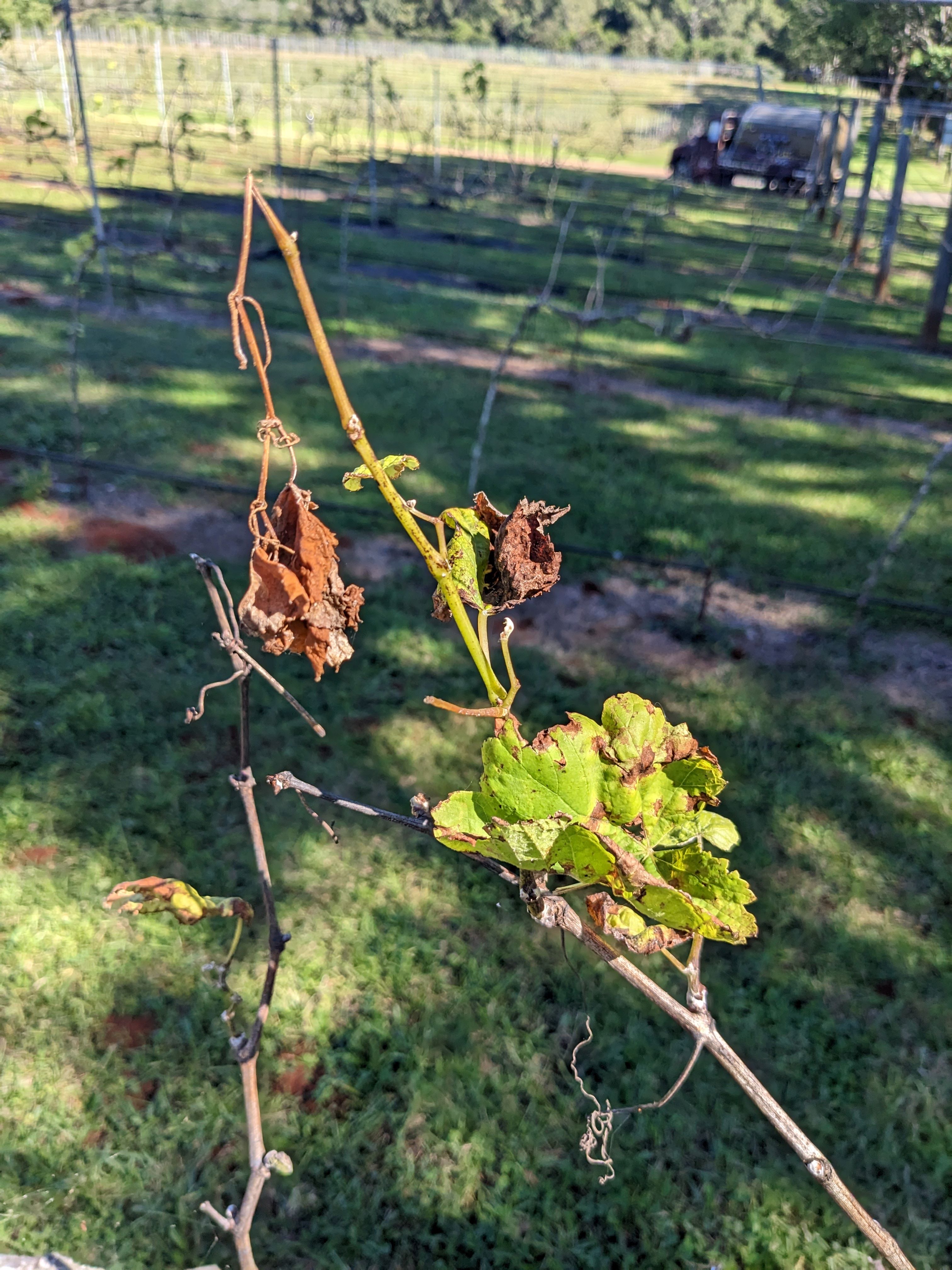

Leaf samples revealed downy mildew Plasmopara viticola. Below: (Left) Sporangiophore, (Right) Sporangia
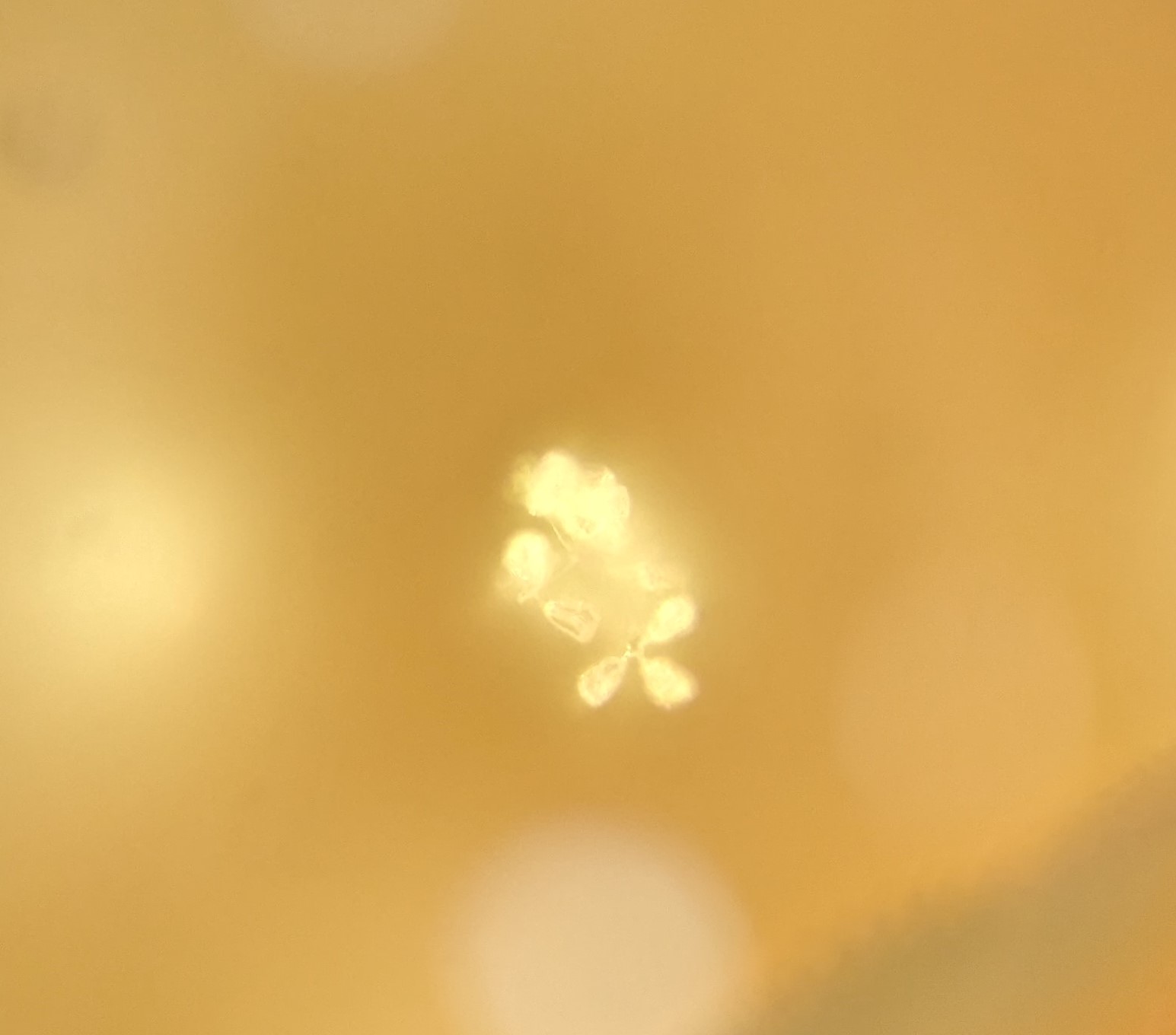
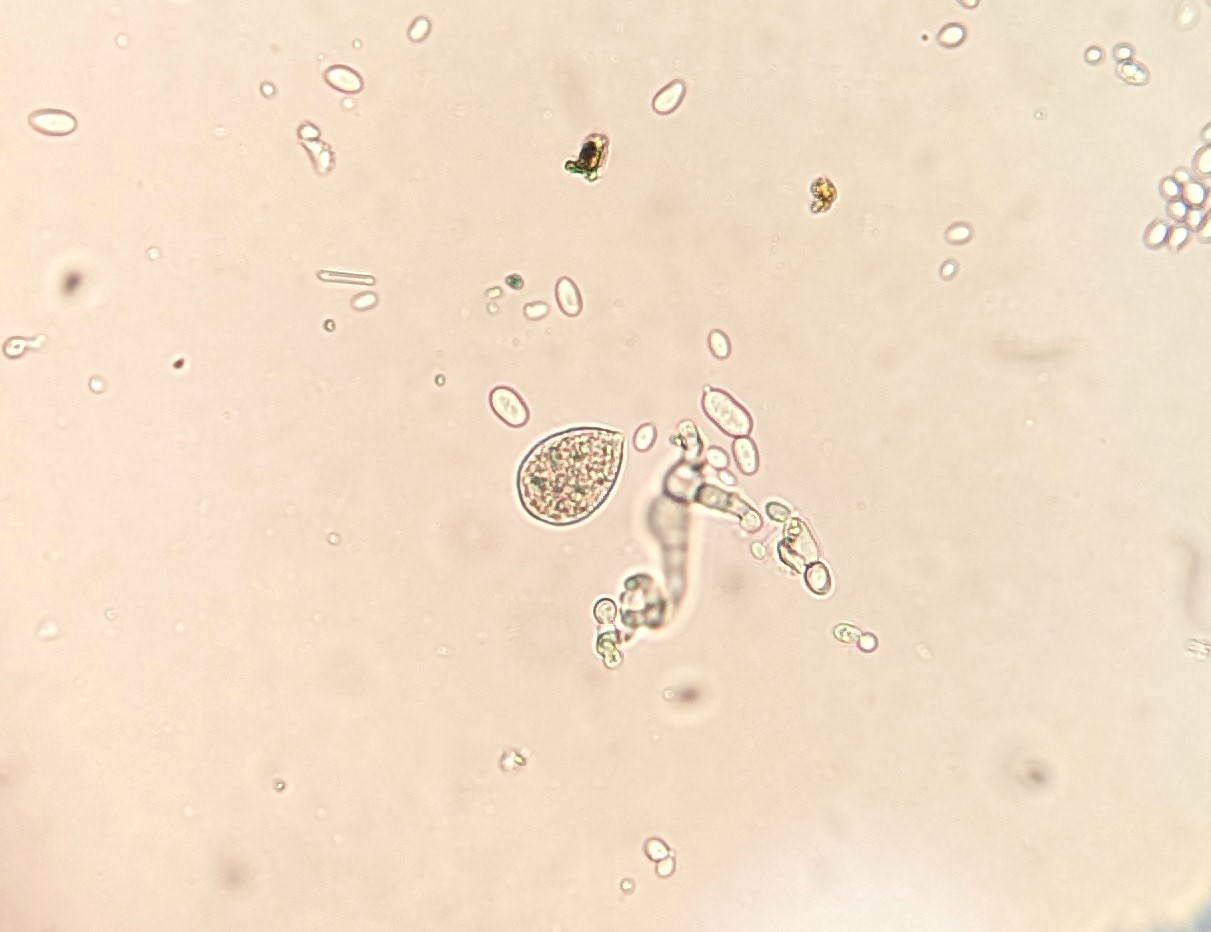
UQ Agri-Food Innovation Alliance grant
April 2023
I am extremely excited to announce Dr Anthony Young and myself were successful in an Industry Kickstarter grant to develop a “Decision support tool to support speciality smallholders and farm-gate producers.”
We are working with Cauldron Distillery and Winery in Mt Tamborine, south of Brisbane, to assess the efficacy of organic and synthetic fungicide timing on foliar grape vine diseases, powdery mildew and downy mildew. The field trial will assist in refining a decision support tool which will help smaller farm gate producer manage disease with lower costs and fungicide applications.
The influence of temperature and vapour pressure deficit on conidial germination and germ tubes production in an Australian Podosphaera xanthii isolate.
March 2023
This paper has been accepted and published in the European Journal of Plant Pathology. https://doi.org/10.1007/s10658-023-02664-5
Sampling Ascochyta rabaeii for field experiment
February 2023
Following the Goondiwindi GRDC updates I drove home via the Eastern Darling Downs to collect some Ascochyta infested chickpea stubble. This will be used for inoculum in a field trial we are planning later this year.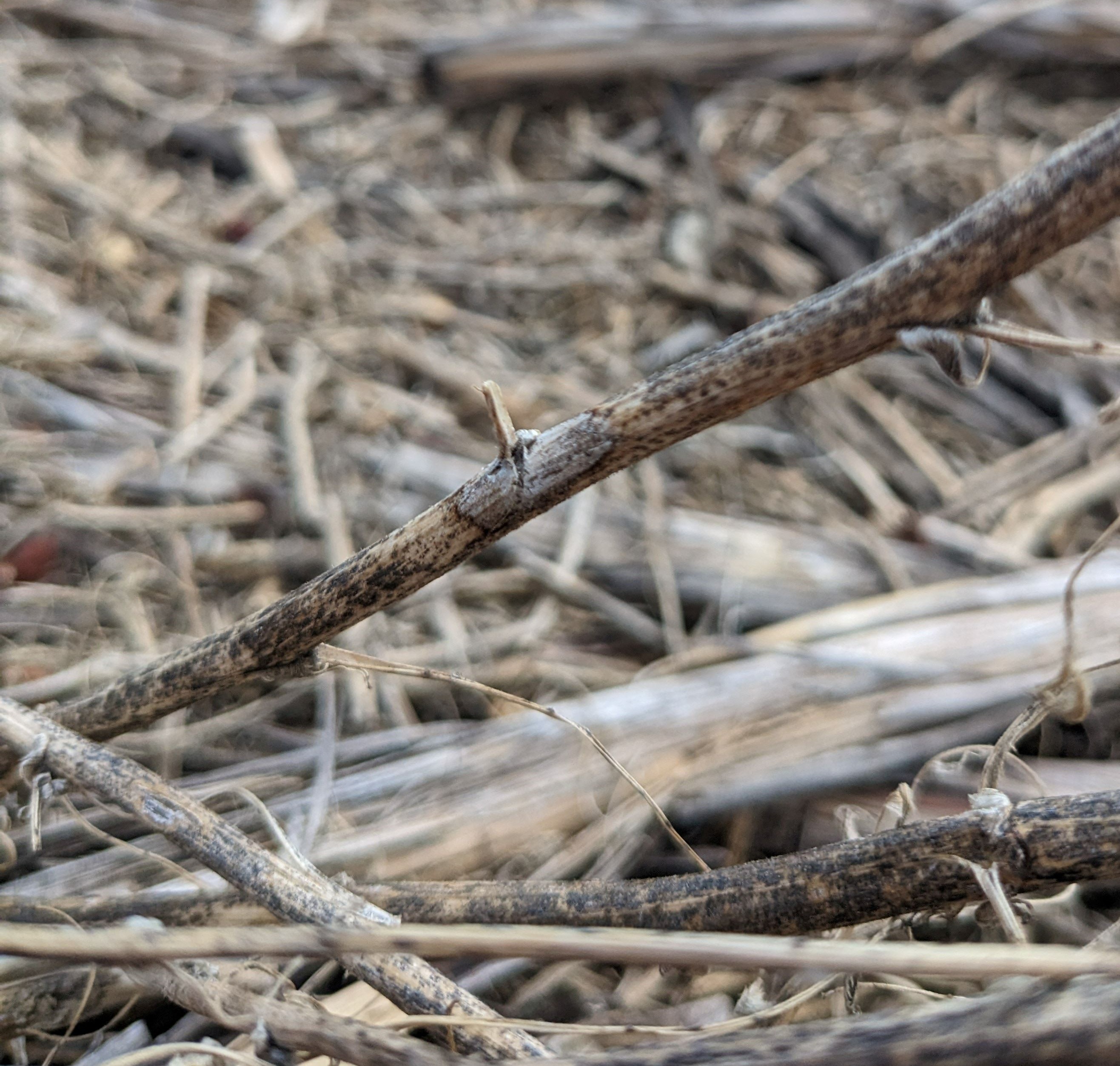
Stay tuned!!!
The influence of temperature and vapour pressure deficit on conidial germination and germ tubes production in an Australian Podosphaera xanthii isolate.
November 2022
I am pleased to share a pre-print of a paper I have been assisting with, titled, “The influence of temperature and vapour pressure deficit on conidial germination and germ tubes production in an Australian Podosphaera xanthii isolate.” The paper has been submitted for review at the European Journal of Plant Pathology. The work was undertaken as part of Zaiton Sapak’s PhD and furthers our understanding on the temperature and vapour pressure conditions which influence germination rate and infection success of P. xanthii on cucurbit leaves.
Powdery mildew is at a high risk of evolving fungicide resistance and improper applications can be costly, hastening the evolution of fungicide resistance. Understanding the conditions at which the crop is at risk of infection will lead to the development of models and decisions support tools which increase the lead time to prepare for fungicide applications and timing sprays for maximum efficacy, reducing excessive spray applications or the immediate cost of applying ineffective poorly timed sprays.
The results from this paper show the optimum conditions for rapid conidia germination and the production of secondary and tertiary germ-tubes (a proxy for successful infection) was 28°C at saturated vapour pressure. Germination was prevented at temperatures above 34°C and below 8°C and reduced at other temperatures. As vapour pressure deficit increased germination and germ tube production decreased in a non-linear relationship and never completely prevented conidial germination or germ-tube production.
I assisted with statistical analysis and final drafts of the paper.
If you wish to read the pre-print, you can download it from Zenodo.
You can also find the full statistical analysis and code at the research compendium here..
National Pulse Pathology Meeting & Ascochyta blight Workshop
October 2022
An amazing week of presentations and discussions around pulse
pathology and ascochyta blight research in chickpea. I had a great time
learning about chickpea breading efforts and disease epidemiology
research. I came away with some excellent insights that I wish to apply
as improvements to the ascotraceR model. Watch this
space.
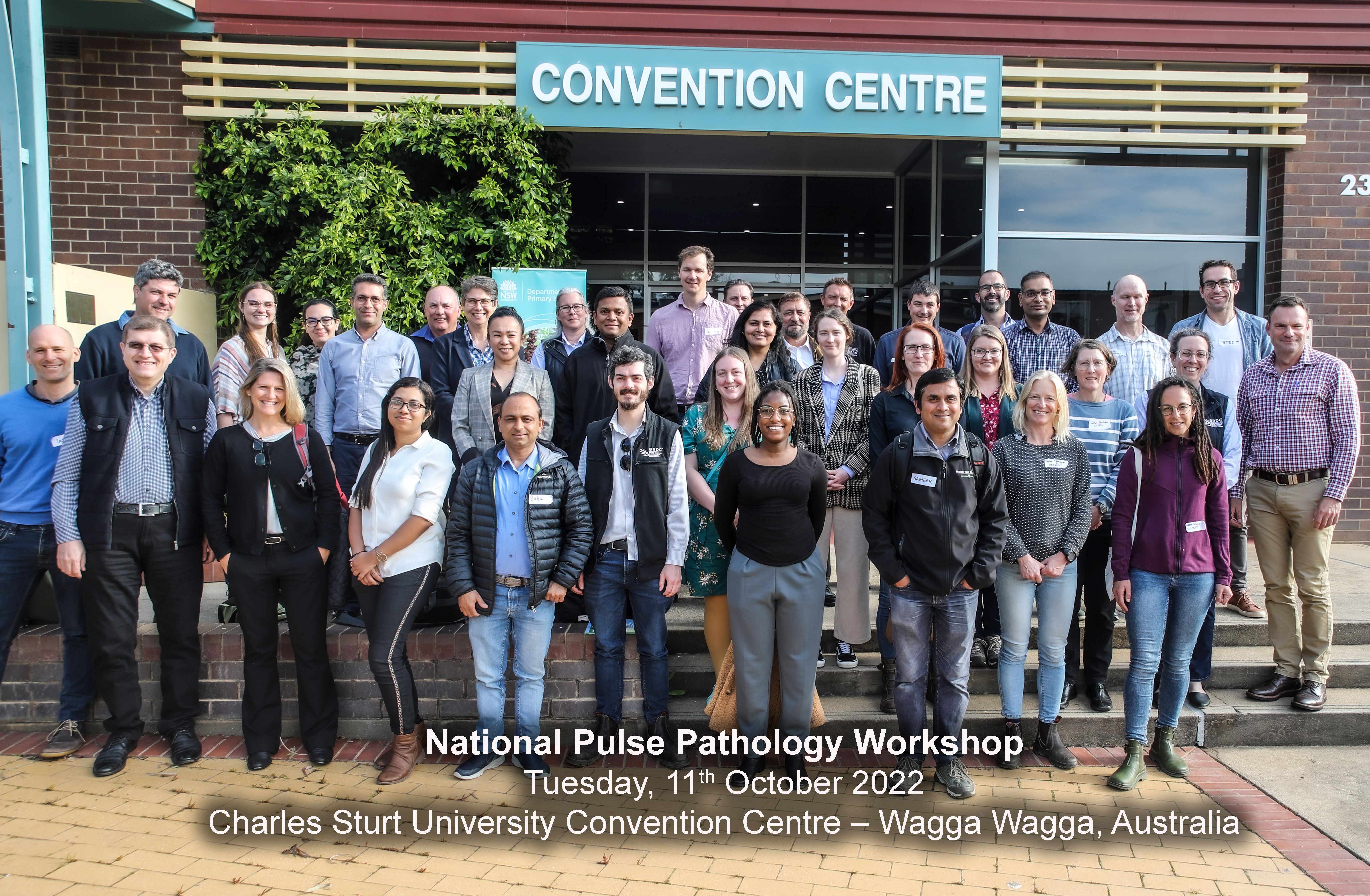
GRDC Update - Miles - Pitsworth - Goondiwindi
July 2022
At the end of July, I travelled around South East Queensland to the GRDC Updates to present the decision support tools which have been developed on the GRDC funded project I am involved with. A second la nina at the start of 2022 has provided a lot of moisture which are likely to lead to heavy losses to foliar diseases if crops are not managed well for disease.
The main apps we were presenting for the Northern grains region were StripeRustWM and YellowSpotWM.
There was a lot of interest in the applications and many were not yet familiar with the available suit of decision support tools (DST). With a full moisture profile across many of the cropping areas those who were able to sow had more options. With seemingly more growers from the Goondiwindi region going into canola. Some farm managers were therefore interested in the canola DSTs SclerotiniaCM, and UCI BlackLegCM.
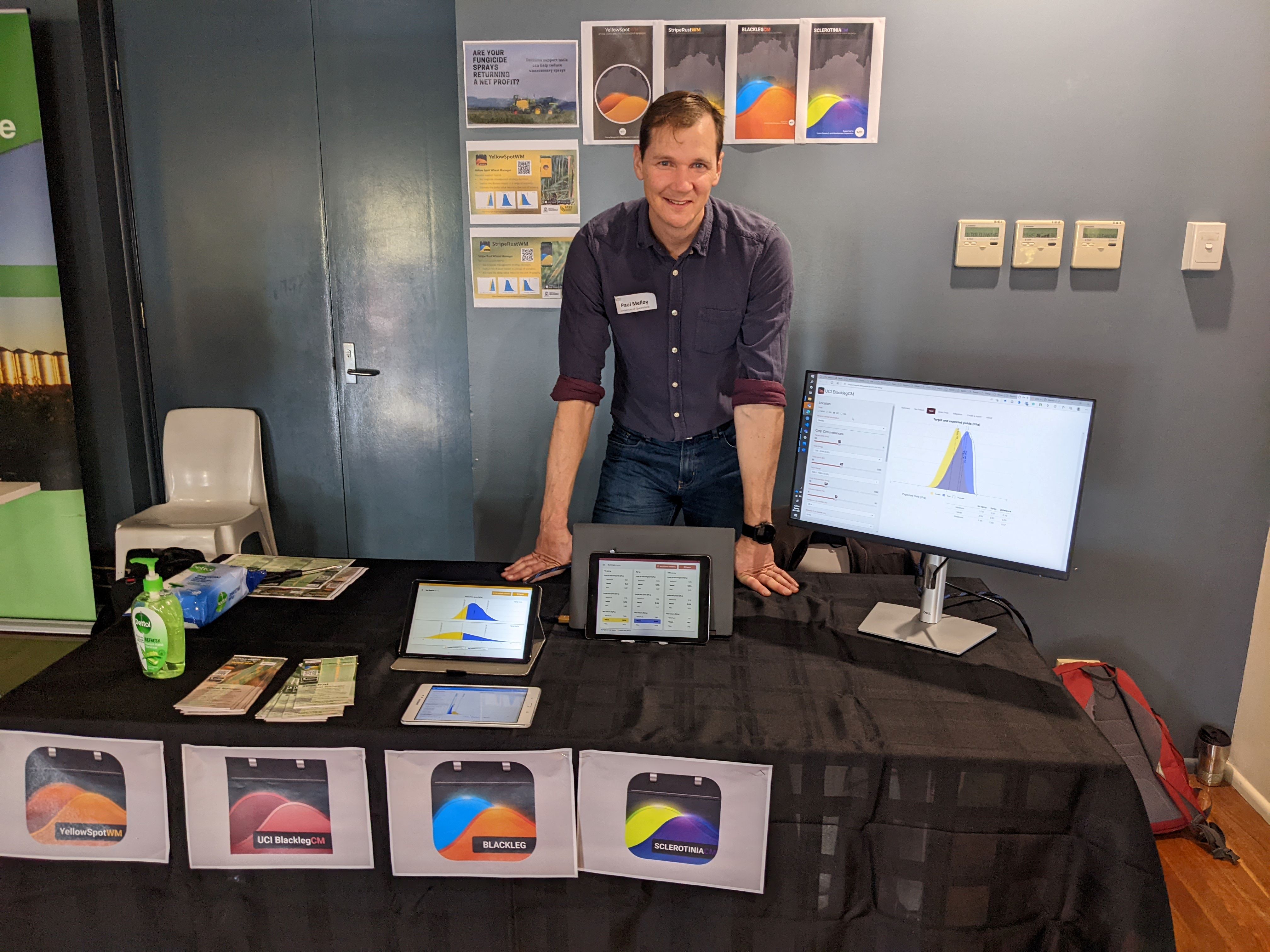
Farms Advice - Plant disease modelling interview
June 2022
I had a great chat with ABC rural trailblazer Jack Cresswell on his Farms Advice pod-cast.
Follow this link to the interview.
Or search for ‘Farms Advice’ in your pod-cast app.
Simulation model for ascochyta blight
May 2022
ascotraceR is an R package which simulates ascochyta
blight epidemics in chickpea crops. You can find ascotraceR
on CRAN, and a resource announcement in Phytopathology.
Is UniSuper’s Defined Benefit Division fund worthwhile Shiny App
May 2022
Choice of superannuation is not the first type of research people like to do when starting a new job. Most people want to finish the induction paperwork and financial forms as quickly as possible so they can commence diligently working for their new employer. Therefore I gather most people would not fully dedicate their time to trying to understand ‘What is a defined benefit division?’ and ‘Is it the best super product for me?’. I certainly did not when I started work with the University of Southern Queensland almost four years ago. I was coerced into UniSuper’s DBD and only 3 years down the track I realise it was not for me.
When checking up on my super balance, shortly after starting work at The University of Queensland, I noticed that the total contributions I made from my salary after tax exceeded the fund balance. Suffice to say, I liken the DBD to a pyramid scheme which only benefits people who are over the age of 50. In fact it is almost impossible to have a positive net return if you exit the fund before the age of 46.
To help people understand how the DBD is calculated I created a shiny app which can be found at the following link https://paulmelloy.shinyapps.io/UniSuperDBD/
2022 Election shiny app
May 2022
I have been working on a shiny app to help a political party I am a
member of, the Fusion Party,
Science, Pirate, Secular and Climate Emergency
Parties
The shiny app was made to easily convert electoral boundaries data from
shape file to KML file so they could be uploaded on a
shared Google maps. Needless to say the app expanded monstrously when I
found more data on the AEC
website.
I included some analysis of voting preferences by division and voting
booth, including expected voter turnout to booths.
Check out the app at https://paulmelloy.shinyapps.io/22_electoralboundaries/
Estimating leaf temperature from NASA satellite data
April 2022
I wrote a blog, published on OpenPlantPathology’s website, for how to
use R to estimate leaf temperatures from data retrieved using the
nasapower R package. Then plugging the data into functions
from the R package tealeaves. The result is being able to
estimate the leaf temperature for any where on the planet.
Click here to read the blog post
Efficient control of powdery mildew in mungbeans
November 2021
This paper uses meta-analytic methods to examine 16 field trials over eight seasons assessing fungicide spray timing for control of powdery mildew.